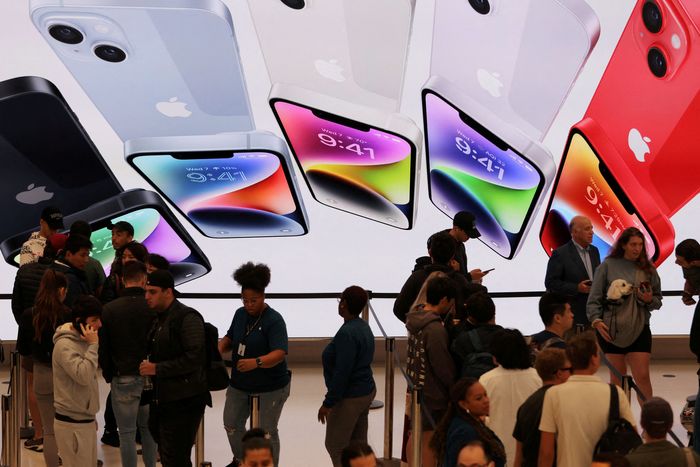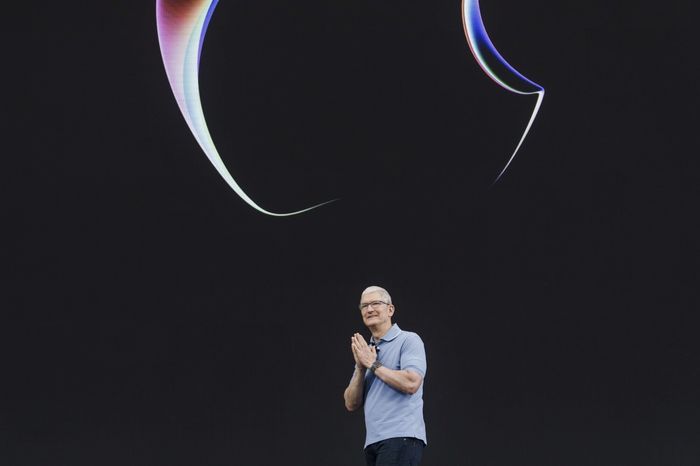Company is expected to raise prices by $100 on some premium models next week

Apple is testing the limits of how much people will pay for premium iPhones as it tries to drive revenue despite slowing global demand for smartphones.
The tech company is expected by analysts to raise prices by as much as $100 for some updated models of its flagship device when it unveils the iPhone 15 at an annual promotional event set for Tuesday. Those new iPhone Pro models are expected to include titanium casing, improved processors and photography features.
The move to steer consumers to premium models has worked phenomenally for Apple in recent years, boosting revenue and profit even when the number of devices sold has been stagnant. Potential price increases will help pay for growing component costs because of inflation, but some analysts have warned that the strategy will soon hit a ceiling.
“The Pros have probably reached their saturation point,” said Josh Lowitz, a co-founder of Consumer Intelligence Research Partners. “I don’t think there are a ton of new iPhone Pro customers.”
For the first time since 2017, the average selling price of iPhones in the U.S. declined to $948 in the June quarter, lower than the same period last year and in the March quarter, the research firm said. IPhone sales fell 2.4% in the quarter ended July 1, slightly missing analyst expectations.
“The smartphone market has been in a decline for the last couple of quarters in the United States,” Apple Chief Financial Officer Luca Maestri said in August.
China might also be a growing risk for Apple’s iPhone business. Beijing recently ordered government officials to not use iPhones for work, The Wall Street Journal reported. The move comes as the country has sought to reduce its reliance on foreign technology and enhance cybersecurity. In the past, China has been a huge source of growth for Apple. In 2021, Apple’s sales in a region it calls greater China increased by 70%, far outpacing the growth in any other region.
As Apple prepares for the iPhone 15 launch, its challenge will be to convince customers that the Pro features are enough to warrant a pricey upgrade.
“It’s becoming harder and harder for consumers to distinguish what the new Pro features are,” said Michael Gartenberg, a senior director on Apple’s marketing team before leaving in 2016, who is now an independent technology adviser. “For most users, the iPhone 13 is going to be good enough, and the base iPhone camera takes good enough pictures.”

In addition to the incremental upgrades in processors and cameras, analysts expect the new iPhone Pros will have titanium casing for a lighter feel than standard stainless-steel iPhones. The devices also are expected to replace the standard mute-ring switch with a button that is customizable to perform certain actions, such as quickly opening the camera app or turning on the flashlight.
The cheaper base model iPhone 15 devices are expected to have less advanced features and come equipped with the same processing chip found in last year’s iPhone 14 Pro.
One major change in store for both the iPhone 15 base and Pro models will be the transition to a new connector port with the USB-C standard—a common connector now found in many consumer electronics including Android phones—moving away from Apple’s proprietary Lightning connector introduced into the iPhone 5 in 2012. Apple is complying with a new European regulation in moving to the new connector port standard.
The transition to a new standard could cause some hesitation among consumers looking to upgrade to the next iPhone. “People aren’t going to upgrade for the sake of upgrading, because they’d have to change over their cables everywhere,” said UBS analyst David Vogt. “Maybe that causes people to wait a little bit.”
Apple began its journey into higher priced Pro iPhones four years ago as the smartphone market really started slowing down. In 2019, Apple introduced its first Pro segmentation with the iPhone 11, which provided customers with a more advanced camera system and better display than the base model.
As the years progressed, Apple has added more ways to distinguish its higher-end phones and entice users to go for the Pro models, such as last year’s iPhone 14 Pro coming exclusively with the more advanced chipset.
The iPhone Pro strategy worked. IPhone prices haven’t changed since 2020, but Apple’s sales grew as more buyers opted for premium phones.
Since 2019, the company has increased iPhone revenue more than 44%, going to $205.5 billion in 2022 from $142.4 billion in its fiscal 2019. This growth occurred despite iPhone shipments advancing only around 15% in roughly the same period, according to Counterpoint Research. The company was also able to increase overall net income nearly 81% between fiscal 2019 and 2022.
Another factor benefiting Apple’s iPhone sales in recent years has been the increase in heavy wireless-carrier subsidies to encourage the transition to 5G phones. Apple released its first 5G phone at the end of 2020 with the iPhone 12. That version led to massive growth for Apple in 2021, with iPhone sales up nearly 40% that year.
Those carrier subsidies are expected to continue for the rest of this year in order to push the iPhone 15, said Cliff Maldonado, founder of consulting firm BayStreet Research. But next year might be a different story. Subsidies likely will finally start going away as the carriers seek to improve profitability after three years of subsidizing the transition to 5G phones, he said.
“The consumer is holding on to phones longer and longer,” Maldonado said. “The pain for Apple is going to be next year.”
Comments